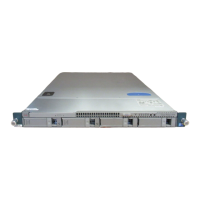CHAPTER 5
Configuring Virtual Ethernet Interfaces
This chapter contains the following sections:
•
Information About vEthernet Interfaces, page 35
•
Guidelines and Limitations, page 36
•
Default Settings, page 36
•
Configuring vEthernet Interfaces, page 36
•
Verifying the vEthernet Interface Configuration, page 41
•
Monitoring the vEthernet Interface Configuration, page 43
•
Configuration Examples for vEthernet Interfaces, page 44
•
Feature History for vEthernet Interfaces, page 44
Information About vEthernet Interfaces
Virtual Ethernet (vEthernet or vEth) interfaces are logical interfaces. Each vEthernet interface corresponds
to a switch interface that is connected to a virtual port. The interface types are as follows:
•
VM (interfaces connected to VM NICs)
•
Service console
•
vmkernel
vEthernet interfaces are created on the Cisco Nexus 1000V to represent virtual ports in use on the distributed
virtual switch.
vEthernet interfaces are mapped to connected ports by MAC address as well as DVPort number. When a
server administrator changes the port profile assignment on a vNIC or hypervisor port, the same vEthernet
interface is reused.
When bringing up a vEthernet interface where a change in the port profile assignment is detected, the Virtual
Supervisor Module (VSM) automatically purges any manual configuration present on the interface. You can
use the following command to prevent purging of the manual configuration:
no svs veth auto-config-purge
Cisco Nexus 1000V for VMware vSphere Interface Configuration Guide, Release 5.x
35

